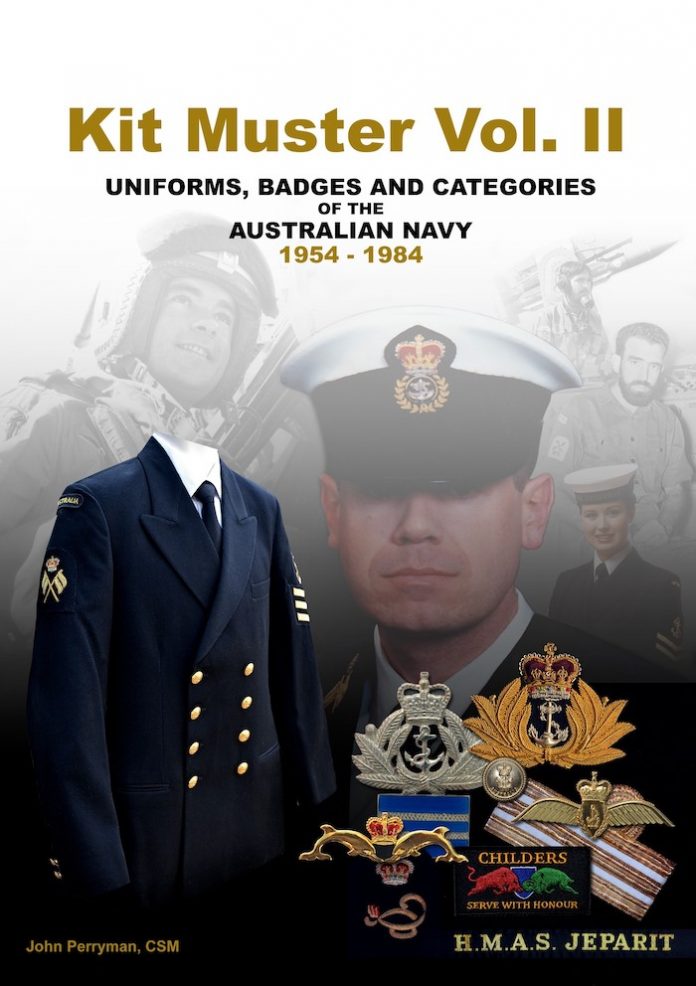
Kit Muster Vol. 2; Uniforms, Badges and Categories of the Australian Navy 1954-1986. By John Perryman. Privately Published 2021, available at navyuniforms.com.au
Reveiwed by Tim Coyle
With the introduction of steam power, advances in gunnery, torpedo and electrical technology in warships in the latter half of the 19th century, naval uniforms began sporting badges indicating the type of work done on board. These badges largely showed a woven design depicting the equipment served, such as guns, torpedoes, flags etc. The new Royal Australian Navy, in Navy Order 1/1913, adopted the Royal Navy uniforms for officers and sailors, by which time every rated seaman had a category badge, or ‘right arm rate’.
John Perryman, former RAN Warrant Officer Signals Yeoman and current Director of Navy History at the RAN Sea Power Centre, published Kitmuster Vol. 1 in 2012, covering colonial naval forces and the RAN to 1953. John chose that date as it was the year Queen Elizabeth ascended the throne. Volume 2 extends from 1954 to 1984, the year the Women’s Forces Regulations were repealed giving females equal access to virtually all Navy occupations.
Kitmuster Vol. 2 is a 500-page, large format book. The size allows for full size colour reproductions of officers’ and sailors’ uniforms, category badges and a myriad of clothing and personal equipment to be portrayed in detail. Anyone who has served in the Navy always feels a surge of pride and pleasure when a civilian says how much they admire the naval uniform. To be fair, the RAN cannot take complete credit for this as it was based on the RN pattern.
John provides brief overviews of naval developments over the period and details the evolution in uniforms and insignia. The range and scale of the subject matter is exhaustive and many Navy people will be finding out details of uniform and equipment which they probably were not aware of during their service. For example, the smallest branch in the Navy was the three-member Printer Branch and the last Sailmaker left the Navy in 1974.
Naval uniforms are designed for a multitude of purposes – from ceremonial to action and wearing the wrong rig does stand out. The photograph of troops in battle order storming ashore through the surf from the Landing Ship Tank 3501, in the late 1940s, is embellished by a Lieutenant Commander, resplendent in shirt, tie and ‘5s’ jacket sloshing along with them. He was, at least, wearing a steel helmet.
As well as the vast coverage of official Navy uniforms and accoutrements, Kitmuster also features ‘informal’ flying suit and jacket patches, sporting colours, service in multinational forces, souvenir cruise jackets and much more. Despite the rather steep $100 price, Kitmuster Vol. 2 is a definitive guide to RAN uniforms and personal equipment which is a must for uniform and insignia enthusiasts, and indeed, naval personnel of the era with who can browse through the book to revive fond memories.



